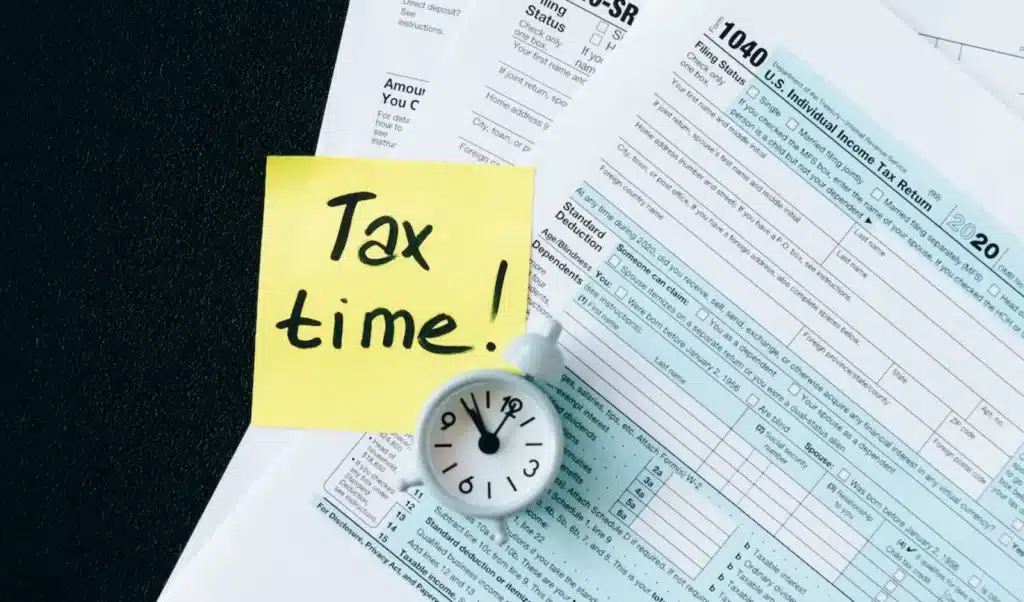Your Guide to NY New York State Tax 2023
Introduction
Navigating the world of taxes can be a complex and overwhelming task, but understanding your state tax obligations is crucial to staying compliant and avoiding unnecessary penalties. In this comprehensive guide, we will provide you with all the information you need to know about NY State Tax for the year 2023. From key changes in tax laws to filing requirements, deductions, and credits, we’ve got you covered. So let’s dive in and demystify NY State Tax.
Understanding NY State Taxes in 2023 – Income Tax Brackets
Overview of NY State Tax
NY State Tax is a form of tax levied on the income earned by individuals and businesses within the state of New York. The tax revenue generated is used to fund various public services, infrastructure, and programs that benefit the residents of New York.
Key Changes for 2023
Before delving into the details of NY State Tax, let’s first highlight some key changes that have been implemented for the tax year 2023. These changes may impact how you file your taxes and the deductions or credits you are eligible for. Stay informed to maximize your tax benefits.
Tax Rates and Brackets
NY State Tax rates are progressive, meaning they increase as your income rises. It’s important to understand the different tax brackets and rates applicable to your income level. The tax rates for 2023 are as follows:
- Bracket 1: Income up to $8,500 – Tax rate: 4%
- Bracket 2: Income between $8,501 and $11,700 – Tax rate: 4.5%
- Bracket 3: Income between $11,701 and $13,900 – Tax rate: 5.25%
- Bracket 4: Income between $13,901 and $21,400 – Tax rate: 5.9%
- Bracket 5: Income between $21,401 and $80,650 – Tax rate: 6.33%
- Bracket 6: Income between $80,651 and $215,400 – Tax rate: 6.57%
- Bracket 7: Income between $215,401 and $1,077,550 – Tax rate: 6.85%
- Bracket 8: Income above $1,077,551 – Tax rate: 8.82%

Filing Requirements
Who Needs to File?
Determining whether you need to file a NY State Tax return depends on various factors, including your filing status, income level, and age. Generally, if you are a New York resident, you will need to file a tax return if your income meets certain thresholds.
Resident vs. Non-Resident Taxpayers
Understanding the difference between resident and non-resident taxpayers is essential when it comes to NY State Tax obligations. If you are a resident of New York, you are subject to tax on your worldwide income. Non-residents, on the other hand, are only taxed on income earned within the state.
NY State Tax Forms to File Your Tax Return
Form IT-201: Resident Income Tax Return
The Form IT-201 is used by resident taxpayers to report their income, deductions, credits, and calculate their NY State Tax liability. This form requires detailed information about your income sources, expenses, and any applicable credits or deductions.
Form IT-203: Non-Resident and Part-Year Resident Income Tax Return
If you are a non-resident or part-year resident of New York, you will need to file the Form IT-203. This form is specifically designed for individuals who have earned income from New York sources but are not full-year residents.
Deductions and Credits
Standard Deduction
The standard deduction is an amount that reduces your taxable income. For the tax year 2023, the standard deduction amounts are as follows:
- Single or married filing separately: $8,000
- Married filing jointly or qualifying widow(er): $16,000
- Head of household: $11,600
Itemized Deductions
Alternatively, you can choose to itemize your deductions instead of taking the standard deduction. Itemized deductions allow you to deduct specific expenses such as mortgage interest, medical expenses, state and local taxes paid, and charitable contributions.
Child and Dependent Care Credit
If you have dependent children or care for a dependent adult, you may be eligible for the Child and Dependent Care Credit. This credit helps offset the costs associated with childcare or dependent care services, allowing you to reduce your NY State Tax liability.
Earned Income Credit
The Earned Income Credit (EIC) is a refundable tax credit designed to assist low to moderate-income individuals and families. The EIC can provide a substantial tax benefit, so it’s important to determine if you qualify and claim the credit if eligible.

NY State Tax Withholding
W-4 Form and Withholding Allowances
When you start a new job or experience changes in your personal or financial situation, it’s important to review your W-4 form. The W-4 determines the amount of income tax that your employer withholds from your paycheck. Adjusting your withholding allowances can help ensure you’re not overpaying or underpaying your NY State Tax throughout the year.
Estimated Tax Payments
If you receive income that is not subject to withholding, such as self-employment income, rental income, or investment income, you may be required to make estimated tax payments. These payments help you meet your tax obligations and avoid penalties for underpayment.
Filing Methods and Deadlines
Electronic Filing
Filing your NY State Tax return electronically offers several advantages, including faster processing times and reduced chances of errors. You can file electronically using tax software, online services, or through a certified tax preparer.
Paper Filing
If you prefer to file a paper return, you can do so by completing the necessary forms and mailing them to the appropriate tax office. Keep in mind that paper filing may take longer to process, and there is a higher risk of errors or delays.
Extension Requests
If you need additional time to file your NY State Tax return, you can request an extension. The extension gives you extra time to submit your return without incurring penalties, but it’s important to note that it does not extend the payment deadline. You will still need to estimate and pay your tax liability by the original due date.

Common Mistakes to Avoid
Mathematical Errors
Double-checking your math is crucial when preparing your NY State Tax return. Mathematical errors can lead to incorrect calculations, potentially resulting in underpayment or overpayment of taxes.
Incorrect Social Security Numbers
Ensure that you enter your Social Security number (SSN) accurately on your tax forms. Mistyping or providing an incorrect SSN can delay the processing of your return and potentially cause issues with your tax records.
Missing Signatures
Don’t forget to sign and date your NY State Tax return. A missing signature can invalidate your return and cause unnecessary delays in processing.
Audits and Penalties
What Triggers an Audit?
While most tax returns are processed without issues, some may be selected for an audit. Audits can occur randomly or based on specific criteria, such as claiming excessive deductions or credits, inconsistent income reporting, or a high-income level. It’s essential to keep accurate records and support any claims made on your return.
Penalties for Non-Compliance
Failure to comply with NY State Tax regulations can result in penalties and interest charges. Penalties may be imposed for late filing, underpayment of taxes, negligence, or intentional tax evasion. It’s important to understand the consequences of non-compliance and strive to meet your tax obligations.

Seeking Professional Help In New York State For Tax Expertise
Navigating NY State Tax can be complex, especially if you have unique circumstances or complex financial situations. Consider seeking the assistance of a tax professional or CPA to ensure accurate and efficient preparation of your tax return.
Conclusion
Understanding NY State Tax is crucial for individuals and businesses residing or earning income within New York. By familiarizing yourself with the key aspects of NY State Tax, such as filing requirements, forms, deductions, and credits, you can navigate the tax landscape more confidently. Remember to stay informed about any changes in tax laws and seek professional help when needed to maximize your tax benefits and ensure compliance.
FAQs
- Can I file my NY State Tax return online?
Yes, you can file your NY State Tax return online using tax software, online services, or through a certified tax preparer. Electronic filing offers convenience and faster processing times.
- What happens if I miss the NY State Tax filing deadline?
If you miss the NY State Tax filing deadline, you may be subject to penalties and interest charges. It’s important to file your return or request an extension to avoid unnecessary penalties.
- Can I claim deductions and credits on my NY State Tax return?
Yes, you can claim deductions and credits on your NY State Tax return. Common deductions include the standard deduction and itemized deductions, while credits include the Child and Dependent Care Credit and the Earned Income Credit.
- What should I do if I receive an audit notice from the NY State Tax Department?
If you receive an audit notice, it’s important to respond promptly and provide any requested documentation or information. Seeking professional help from a tax professional or CPA can be beneficial during the audit process.
- How can I estimate my NY State Tax liability?
You can estimate your NY State Tax liability by using tax calculators or tax software that consider your income, deductions, and credits. Alternatively, you can consult a tax professional for accurate estimation.








